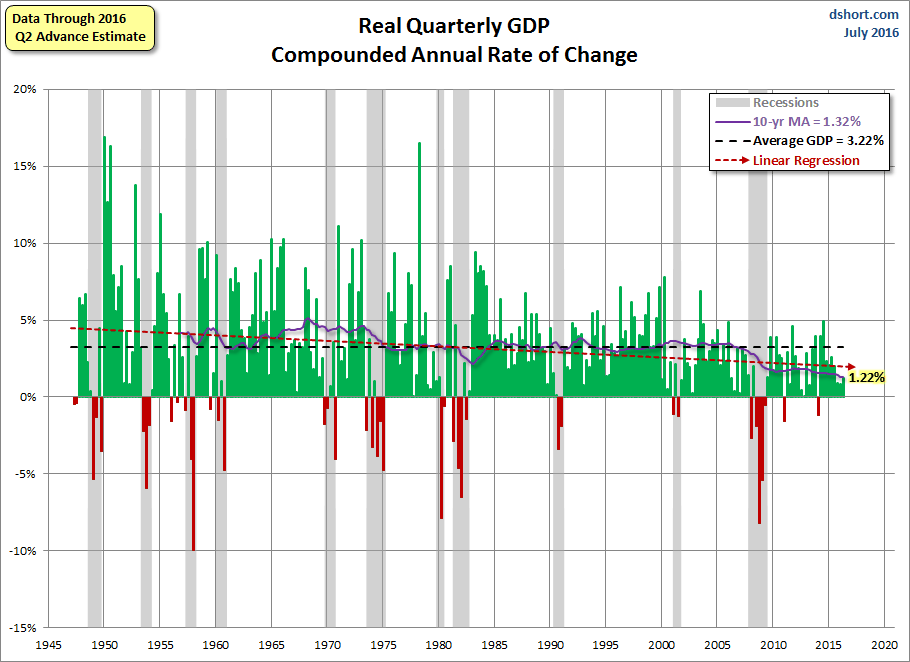Courtesy of Doug Short.
The Second Estimate for Q4 GDP, to one decimal, came in at 2.2 percent, a decline from 2.6 percent in the Advance Estimate. Today’s number was generally in line with most economists’ expectations. For example, Investing.com had a forecast of 2.1 percent.
Here is an excerpt from the Bureau of Economic Analysis news release:
Real gross domestic product — the value of the production of goods and services in the United States, adjusted for price changes — increased at an annual rate of 2.2 percent in the fourth quarter of 2014, according to the “second” estimate released by the Bureau of Economic Analysis. In the third quarter, real GDP increased 5.0 percent.
The GDP estimate released today is based on more complete source data than were available for the “advance” estimate issued last month. In the advance estimate, the increase in real GDP was 2.6 percent. With the second estimate for the fourth quarter, private inventory investment increased less than previously estimated, while nonresidential fixed investment increased more (see “Revisions” on page 3).
The increase in real GDP in the fourth quarter reflected positive contributions from personal consumption expenditures (PCE), nonresidential fixed investment, exports, state and local government spending, private inventory investment, and residential fixed investment that were partly offset by a negative contribution from federal government spending. Imports, which are a subtraction in the calculation of GDP, increased.
The deceleration in real GDP growth in the fourth quarter primarily reflected an upturn in imports, a downturn in federal government spending, and decelerations in nonresidential fixed investment and in exports that were partly offset by an acceleration in PCE, an upturn in private inventory investment, and an acceleration in state and local government spending. [Full Release]
Here is a look at GDP since Q2 1947 together with the real (inflation-adjusted) S&P Composite. The start date is when the BEA began reporting GDP on a quarterly basis. Prior to 1947, GDP was reported annually. To be more precise, what the lower half of the chart shows is the percent change from the preceding period in Real (inflation-adjusted) Gross Domestic Product. I’ve also included recessions, which are determined by the National Bureau of Economic Research (NBER).
Here is a close-up of GDP alone with a line to illustrate the 3.3 average (arithmetic mean) for the quarterly series since the 1947. I’ve also plotted the 10-year moving average, currently at 1.6 percent.
Here is a log-scale chart of real GDP with an exponential regression, which helps us understand growth cycles since the 1947 inception of quarterly GDP. The latest number puts us 13.6% below trend. That is slightly off the 14.0% below in Q1 of 2014.
A particularly telling representation of slowing growth in the US economy is the year-over-year rate of change.
And for a bit of political trivia, here is a look at GDP by party in control of the White House and Congress.
In summary, the Q4 GDP Second Estimate of 2.2 percent was essentially in line with the forecasts of mainstream economists.








